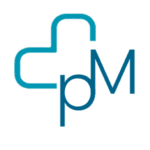As the world recovers from the impact of the COVID-19 pandemic, school systems are now faced with the task of recovering from the unprecedented disruptions to education caused by the pandemic.
After more than a year of remote and hybrid learning models, schools are now returning to in-person instruction. However, the transition back to “normalcy” comes with its own set of challenges.
School systems must address the academic and social-emotional needs of students who may have fallen behind during remote learning, re-establish a sense of community and connectedness, and ensure that students and staff feel safe and supported as they return to the classroom. This recovery process will require creative solutions, flexibility, and collaboration between educators, families, and communities.
How COVID-19 Changed Education in the United States
At the height of the pandemic, one of the most significant changes was the shift to online learning. With schools closed to prevent the spread of the virus, many districts had to quickly transition to virtual classrooms. This sudden shift presented several challenges, such as limited access to technology and the internet for some students, making it difficult for them to participate fully in virtual classes. Teachers also had to adapt to this new mode of instruction, often without the necessary training and support.
The pandemic also highlighted pre-existing disparities in education. Students from low-income households, those with disabilities, and English language learners were disproportionately impacted by school closures and the shift to online learning. These students often lacked access to the technology and resources needed for virtual instruction. The pandemic also disrupted many special education services, such as speech therapy and occupational therapy, which require in-person interaction for efficacy.
Moreover, the pandemic disrupted extracurricular activities and social interactions that are an essential part of the school experience. Many schools canceled sports, music, and drama programs, depriving students of the benefits of these activities. Social isolation and the lack of in-person interaction with teachers and peers also had a negative impact on student’s mental health and social development.
Finally, the pandemic highlighted the need for comprehensive plans for school closures and remote learning. Many districts struggled to implement effective remote learning programs, and there was no clear consensus on how to evaluate student progress during this time. As schools return to in-person learning, there is a need to address the academic and social-emotional needs of students who were impacted by the pandemic.
As a result of these challenges and others, schools struggled to provide quality education to their students, resulting in national math and reading scores hitting historic lows.
Recent federal testing results have documented two decades of lost progress, bringing unusually broad and intense public attention to the developmental harm the COVID-19 pandemic has had on U.S. schoolchildren.
In response, some states like Tennessee are requiring high-dosage tutoring for students performing below grade level. However, with large swaths of students now far behind, paying for intensive tutoring may be hard to sustain after federal pandemic recovery funding runs out.
Additionally, graduation rates fell in at least 31 states for the class of 2021, and the latest graduating class of 2022 had historically low scores on college placement tests.
The Return to In-Person Learning
In a post-pandemic world, school districts are facing pressure from elected officials, teachers, administrators, parents, and students to implement intervention strategies that mitigate the risk of an outbreak in an in-person learning environment.
However, an unexpected challenge faces districts seeking to return schools to an in-person learning environment. The pandemic has introduced what experts call an “immunity gap” among children against common illnesses.
An immunity gap refers to a situation where a significant portion of a population remains susceptible to a particular infectious disease because they have not yet been vaccinated, previously infected, or have not developed immunity through natural exposure.
In the case of the pandemic, school children have developed an immunity gap to seasonal respiratory illnesses they were not exposed to during remote learning. This is a result of pandemic health safety measures, such as masking and social distancing, that also proved effective against annual illnesses such as influenza and respiratory syncytial virus (RSV).
Without exposure to these viruses over the 2+ years of the pandemic, school-age children are more susceptible to contracting annual illnesses.
These seasonal respiratory illnesses present symptoms very similar to COVID variants, making it difficult to diagnose what exactly sick students may have, which directly influences your school’s outbreak response. Both viruses are highly contagious and can easily spread among students, teachers, and staff, leading to outbreaks and school closures.
Download our Seasonal Illness Comparison in the Complete Playbook for Academic Recovery
Influenza, commonly known as the flu, typically circulates during the fall and winter months and can cause mild to severe illness. Symptoms can include fever, cough, sore throat, body aches, and fatigue. In severe cases, the flu can lead to hospitalization or even death, particularly in high-risk individuals such as young children, the elderly, and those with underlying health conditions. Outbreaks of the flu in schools can cause significant disruption to learning and attendance, as well as increased healthcare costs for families.
RSV is another respiratory virus that primarily affects young children and infants, causing symptoms similar to the common cold, such as a runny nose, cough, and fever. In severe cases, RSV can lead to pneumonia and other complications, particularly in premature infants or those with underlying health conditions. Outbreaks of RSV in schools can be particularly challenging, as they can spread efficiently on surfaces, causing concern among educators and health officials. This is because, unlike COVID-19, it can survive for several hours or even days on surfaces, increasing the risk of transmission in classrooms and other shared spaces.
Combined with the push to return to in-person learning, many families across the country are opting for homeschooling or private schooling where environmental factors are more readily within their control.
Public school enrollment is at an all-time low, with many families opting for homeschooling or private schooling due to health safety concerns.
Some school districts have managed to implement effective intervention strategies that prevent illness and missed school days, while also addressing learning loss from the pandemic. One of the ideal examples is the Los Angeles Unified School District (LAUSD), one of the nation’s largest school districts, which showed surprising gains on the recent federal tests relative to other large cities. The district was quick to credit the positive impact of their COVID-19 intervention strategies.
Effective Intervention Strategies for School Districts
The students of Los Angeles Unified School District made the greatest progress on the National Assessment of Education Progress (NAEP) test from 2019 to 2022 compared to any other major city, suggesting that the district’s COVID-19 intervention measures produced encouraging outcomes. The NAEP’s Biannual Mathematics and Reading Assessments, known as the Nation’s Report Card, serve as the benchmark for comparing the academic achievements of Los Angeles Unified students with those of other urban districts across the nation.
“The Los Angeles Unified community has worked tirelessly over the past few years and endured incredible challenges throughout the pandemic, so this news is truly a bright spot after a period of darkness, the strategies we have implemented to address learning loss and achievement gaps are working. Is there more work to be done? No doubt. But these are early signs that our deliberate and strategic initiatives are getting students back on track after the past few years of adversity.”
— Superintendent Alberto M. Carvalho
So just how DID the Los Angeles Unified School District achieve these results during a time when most districts suffered drastic academic outcomes? Below we outline two significant strategies that contributed to LAUSD’s success.
1. Implement “Response Testing” Protocol + Track Results
Starting in 2022, LAUSD required weekly PCR + Rapid Antigen Testing of all students and staff to ensure in-person learning could begin and continue. Test results were uploaded into Daily Pass, a tool LAUSD adopted to increase visibility into results and contact tracing. Through weekly testing is no longer a requirement for the school district, Daily Pass continues to be used to track test results.
As of June 2022, LAUSD switched to a “response testing” protocol, where only those who are experiencing COVID-19 symptoms or who have been in close contact with a person who has tested positive will be required to test. All testing is conducted with take-home rapid antigen tests, which are available for students and employees at their school or worksite. All school campuses also continue to use the Daily Pass portal for daily health screening questions, monitoring rapid antigen test results, and notifying individuals if they are close to someone who has tested positive.
2. Offer Accelleration Days and Tutoring Services
As part of the 2022-26 Strategic Plan, LAUSD has implemented several tactics to address the learning loss from the pandemic. They have introduced optional Acceleration Days that provide additional instruction time to identify areas of improvement, expanded tutoring services to assist students during and after school hours, and robust summer school programs which served over 100,000 students. Additionally, LAUSD has invested in an influx of counselors and mental health supports, targeted professional learning opportunities for teachers at highest-needs schools that result in effective, equity-driven instruction, and multiple opportunities for intervention and credit recovery in reading, mathematics, and other subjects for students in need.
Want More Actionable Tactics? Download The Complete Playbook for Academic Recovery.
While LAUSD has set an example for other school districts to follow, there are still challenges that need to be addressed. For instance, the costs of implementing such comprehensive intervention strategies can be daunting for some schools, especially those with limited resources. That said, your school’s strategies can be tailored to fit within your annual budget, especially with the right partners.
LAUSD’s testing protocols are also limited to COVID-19, despite RSV and influenza co-circulating with similar symptoms. To mitigate against this testing gap, Peach Medical recommends using diagnostic test kits that work to determine which virus has been contracted. Results can be uploaded to Daily Pass and help administrators respond accordingly depending on which infection is positive. Despite showing similar symptoms, each virus has unique incubation periods, transmission methods, and recovery time.
The challenges that schools are facing today are complex and multifaceted. However, by adopting proactive intervention strategies, schools can help prevent illness and missed school days, address learning loss from the pandemic, and improve the overall well-being of their students and staff.
We know that most administrative teams don’t have the bandwidth or experience to understand how to respond to each virus. That’s why our Chief Medical Officer broke down the similarities and differences in our latest free download, The Complete Playbook for Academic Recovery. For a more hands-on approach, our team specializes in consulting academic institutions and school districts on testing plans and procurement that fit your needs and budget – click here to schedule time with us!
Download The Complete Playbook for Academic Recovery Here
Disclaimer: Peach Medical strongly recommends discussing any testing plans or protocols with a certified physician or healthcare professional before making any decisions. The information provided by Peach Medical is intended to be general in nature and is not a substitute for professional medical advice, diagnosis, or treatment.

